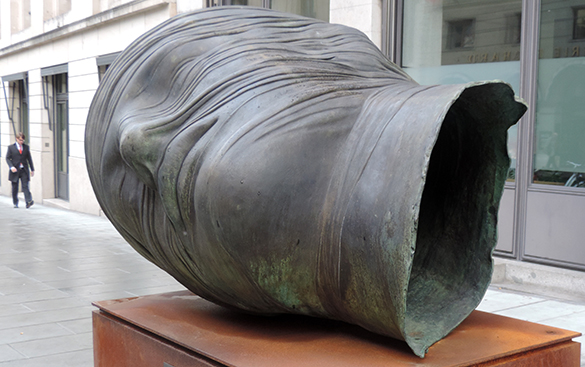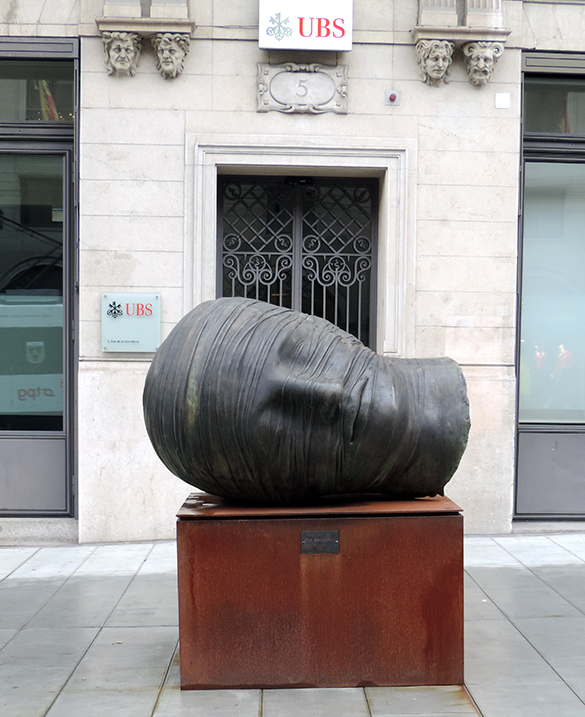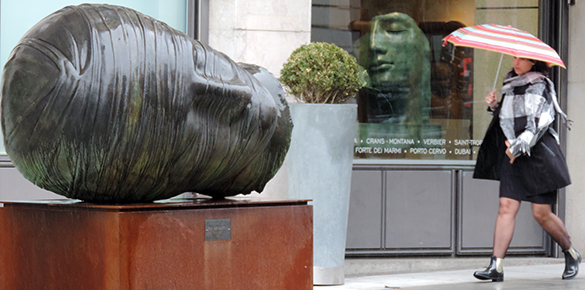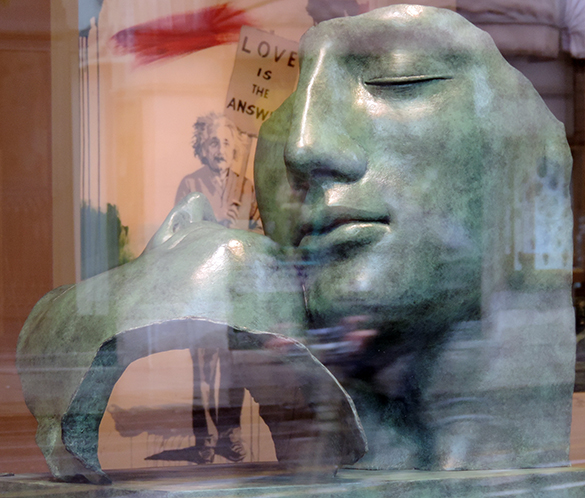
Igor Mitoraj “Testa Addormentata” 1983, Bronze
It is evening. I am late for a meeting. I hurry down rue de la Corraterie in Geneva. I am stopped in my tracks by a new sculpture. This is Igor Mitoraj‘s “Sleeping Head.” What a find! I take time to wander around it and look inside. I tap it with my knucles and rest my palm on its cold smooth surfaces. It is at once beautiful and disturbing; imposing and peaceful. Who installed it here… and why?

The enormous bronze head is sculpted as if bound in swathes of thin linen. Despite this, there is a serenity; the eyes are definitely closed. The unbound lips pout sensuously. I am caught between images of awful arab spring-going-on-autumn youtubed atrocities and something else delicate and erotic. But then provocation of such dichotomy of emotion is the Mitoraj hallmark.
Igor Mitoraj was born in 1944 in Germany to a Polish mother and French father. He studied painting and graduated from the Krakow Academy of Art in 1967. The following year, he went on to work in Paris. He travelled extensively and was especially impressed by the massive statues he came across in Latin America. By 1974 he had converted to sculpture. His work took him frequently to Italy where ravaged, cracked, fragmented and crumbling classical statues became a major inspiration. In 1983 he set up a studio in Pietrasanta just north of Pisa for easier access to the pure white marble of the region. Whether in stone, terracotta or bronze, his work from then on played on classical beauty, our awe of antiquity and a fascination for contemporary suffering. He described this as “mesmerising perfection attached to corrupted imperfection.” He moved to Poland in 2003 and died in 2014.

Mitoraj was a monumental sculptor in every sense. He won numerous prestigious awards and commissions. His work has been exhibited in capital cities all over the world. I ask myself if installation of “Sleeping Head” outside one of Switzerland’s major banks signals the hefty loan you would need to buy the work. But then I realise that the bank is right next to the exquisite Galerie Bel Air Fine Arts. I peer through the gallery’s darkened window and see a bissected classically beautiful bronze face staring back at me. Does all this promise more Mitoraj inside? I hope so!





